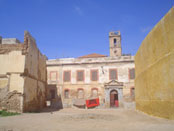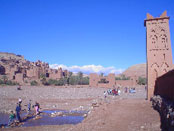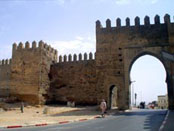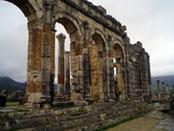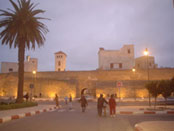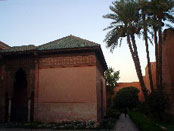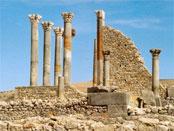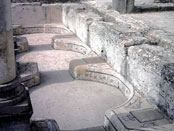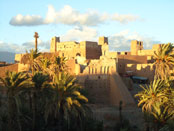Fès
Fez is one of the largest living medieval cities in the world Its narrow alleys and streets along with medieval looking Islamic Schools, restaurants, workshops, markets, shops and ancient palaces do make something special although chaotic to experience. Fez, the capital of the North was funded a few years after the Arabs came to this region. Around 800AD, King Idriss II continued his father will of building a new bigger capital city, so Fez was born and grew from a modest Berber town to a considerably residential and commercial centre with the arrival of 8000 Al-Andalusian families that quickly mixed along some Arab families that came from Qayrawan in Tunisia.
Fez as a lot to offer. You can experience different monuments and Royal Palaces, narrow streets with local bazaars and shops, you can visit the city’s ancient leather dye pits and tanneries and get lost in is Old Medina.
Meknès et les vestiges romains de Volubilis
Another of the Moroccan Imperial Cities almost 100km West of Fez. Meknesis the more laid back of the Imperial cities and reflects its heritage as once the centre of the Moroccan Sultanate still seen in the several Palaces and castle walls around the old Medina. The Berber tribe of the Meknassis first moved to the region around the 10th century but was only around the 17th century that Meknesstart gaining some more respect as an Imperial city when the Alawite dynasty here established the country’s capital under the power of Moulay Ismail. In 1755 Lisbon’s huge earthquake gave Meknesa strong shake and many of its monuments were for ever lost.
Volubilis Roman Ruins
UNESCO Volubilis is the most well preserved Roman site in Morocco and stands for one of the Roman Empire’s most remote outposts. Volubilis was initially settled by Carthaginian traders around the 3rh century BC but was with its annexation to the Roman Empire than quickly gained its deserved fame for the 20,000 habitant’s commercial outpost. The Romans abandoned Volubilis around 280AD but its population of Greeks, Berbers, and Syrians continued to speak Latin even after the arrival of Islam. Volubilis was inhabited until the end of the 18th century when the catastrophic earthquake of Lisbon (Portugal) destroyed the town and its marble was taken for the building of Palaces in Meknes.
Ksar d'Aït Ben Haddou
Ait Ben-Haddou is a fabulous UNESCO site located on top of a hill and consists on an amazing Kasbah village with mud construction occupying a whole hillside on the bottom of the river and offers great landscapes and one of the best views in Morocco.
Marrakech
Marrakech is the capital of the South. The wonder of many travelers than even with lots of tourist activity still remains special and unique. Marrakesh was in history for 2 times the capital of Morocco and actually gave the nowadays western name of Morocco. Marrakesh was founded in 1062 by Almoravid Sultan Youssef Ben Tachfinand, and quickly became very prosperous and one of the most important Islamic cultural and artistic centers as it was expanded after the conquest of Spain by the Almoravid Sultan.
Marrakech offers a lot to travelers and Arrahla Expeditions recommends at least 2 full days in this thrilling town. Its famous square, Djeemaa Elfna is one of its main attractions and is a mixture of restaurant stands along with snake charmers, monkeys, acrobats, fire blowers, loud live music and endless Souq gates. Indeed a must while in Morocco.
Essaouira
Essaouira named Mogador by the Portuguese in the end of the 15th century, is one of the most well known coastal cities in Morocco. It’s very famous for its Gnawa music festival, ocean view castle ramparts and grilled fish restaurants on the ocean side. A walk in Essouaira is a mixture of exotic architecture styles and smells always with music on the background. Most of the architecture that exist today was part of a reconstruction project ordered by the Sultan Sid Mohammed ben Abdallah to a French architect names Théodore Cornut, and the present name of Essaouira meaning “weel designed” comes back from that time.
You can visit the Port where Orsan Welles filmed many of his Othello heading North the wood-workers shops and further more the towns sea bastion built all along the cliffs. Southwest off the coast there’s Mogador Island and the bird sanctuary for Eleanora’s falcon that comes all the way from Madagascar to breed.

